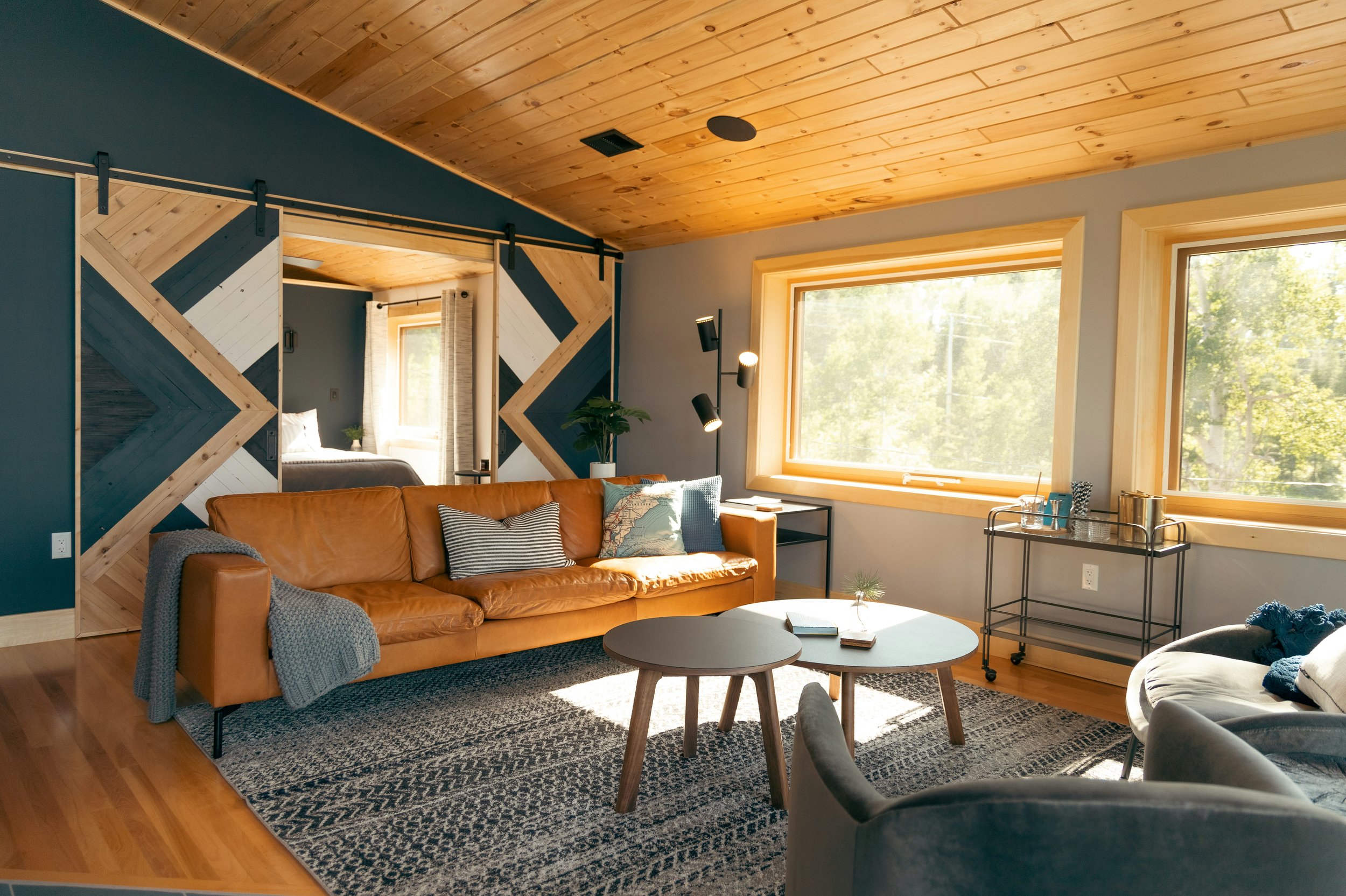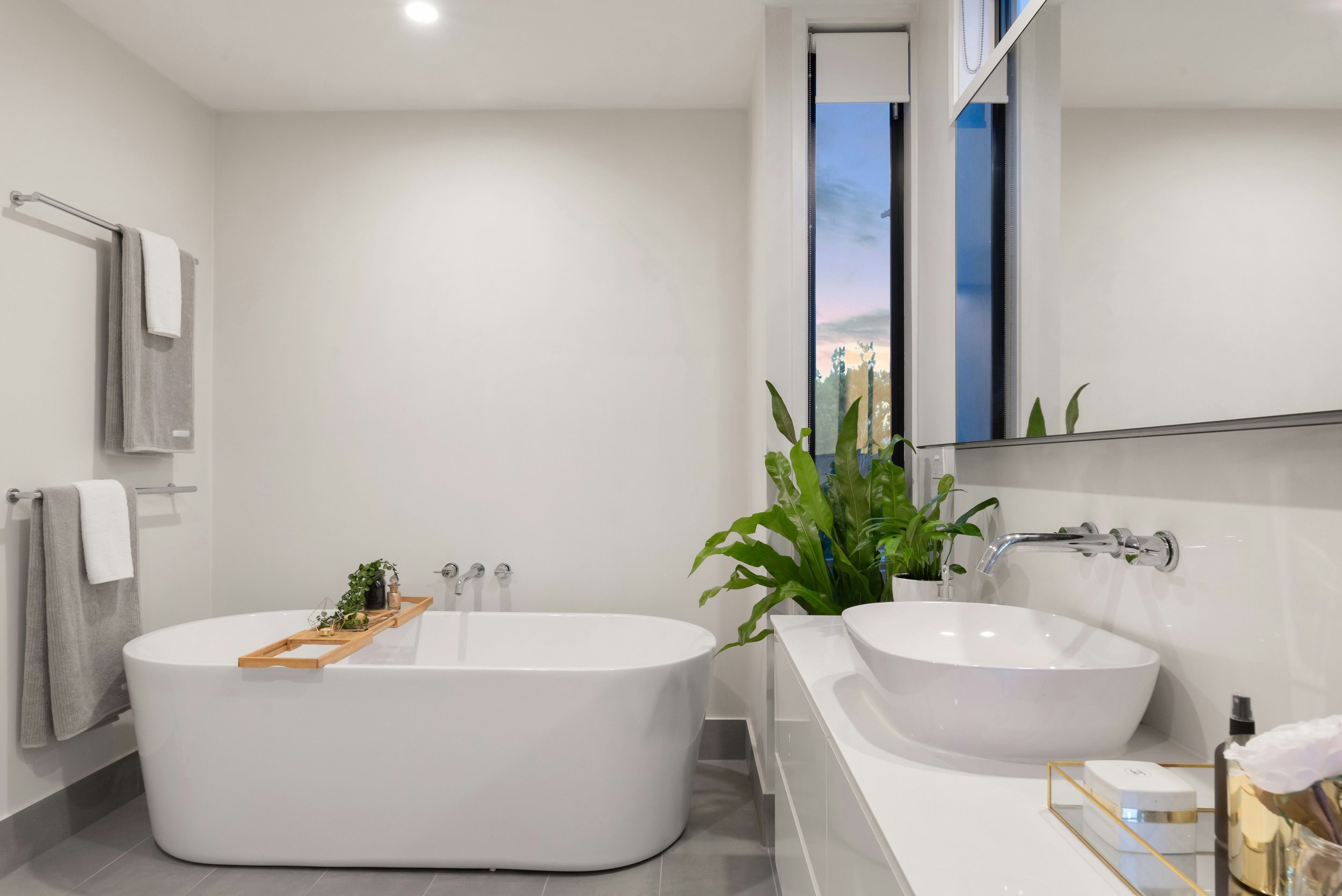2025 Home Remodeling Trends - How to Incorporate Sustainability into Your Entire Home
How has sustainability transformed home remodeling? From architectural salvage and next-gen eco-materials to water-wise design and climate resilience. Innovations that balance environmental responsibility with comfort, and increased property value.
Sustainability has transformed from a niche interest to a fundamental consideration in home remodeling. Homeowners recognize the importance of environmentally conscious choices that reduce carbon footprints while creating healthier living spaces. This shift reimagines how we design, build, and inhabit our homes for future generations.
Many contractors now specialize in sustainable remodeling practices. Companies like https://jcconstruction.us/ in Sacramento exemplify this movement, providing homeowners with options that balance environmental responsibility with aesthetic appeal and functionality.
Market analyses show sustainable homes command a 10-14% premium in property values compared to conventional construction. This financial advantage and utility savings make eco-conscious remodeling a sound investment. Modern sustainable design enhances living experiences through improved air quality, natural lighting, and connection to outdoor environments.
Sustainable Building Materials
Architectural salvage reduces environmental impact while adding unique character to remodeling projects. Salvaged timber beams, vintage doors, and weathered bricks bring an authenticity that is impossible to replicate with new materials. These elements eliminate energy consumption and emissions associated with manufacturing while connecting homes to historical context.
Reclaimed & Upcycled Materials That Tell a Story
Repurposed industrial elements create distinctive features that reduce landfill waste. Factory windows become room dividers, while machinery components transform into lighting fixtures. This approach turns sustainability from an obligation into a creative opportunity.
Next-Generation Eco-Materials Transforming Home Building
Building material innovation has accelerated dramatically in recent years. Mycelium insulation derived from fungal networks provides exceptional thermal performance while sequestering carbon—compressed agricultural waste forms structural panels with impressive strength and natural pest resistance.
Algae-based bioplastics offer alternatives to petroleum products for plumbing fixtures and decorative elements. Hempcrete combines hemp hurds with lime binders to create walls that regulate humidity, insulate effectively, and resist mold growth.
Zero-VOC Finishes for Healthier Indoor Living
Indoor air quality directly impacts resident health. Conventional finishes release volatile organic compounds that contribute to respiratory issues. Modern zero-VOC alternatives utilize plant-based ingredients and mineral formulations that maintain performance without harmful emissions.
Clay-based wall finishes actively improve air quality by absorbing airborne toxins while regulating humidity. These options eliminate the "new renovation smell"—a warning sign of chemical exposure—creating healthier living environments.
Sustainable Countertop Revolution
Countertops occupy substantial visual and functional space, making their environmental impact significant. Recycled glass transforms discarded bottles into stunning surfaces available in countless color combinations. These materials withstand heat and resist staining without the resource extraction required for natural stone.
Paperstone manufactured from recycled paper offers a warm surface that ages beautifully. Bio-based composites incorporating agricultural waste provide alternatives to plastic-heavy solid surfaces.
Beyond Basic Upgrades to Net-Zero Living
Windows and doors once represented thermal weak points, but technological advances have transformed these necessities into energy assets. Triple-pane windows with gas fills and specialized coatings achieve insulation values that approach solid walls. Vacuum-sealed glass panels eliminate heat transfer while maintaining slim profiles suitable for historic renovations.
Dynamic glass automatically adjusts tint levels in response to sunlight, optimizing solar gain throughout changing seasons. Fiberglass and composite door frames resist warping and thermal bridging while mimicking traditional wood aesthetics.
Passive House Principles Anyone Can Implement
The Passive House approach establishes standards that reduce heating and cooling requirements by up to 90%. Homeowners can adopt key principles during renovations to dramatically improve performance without pursuing full certification.
Solar, Wind & Beyond
Residential renewable energy has evolved beyond conventional solar panels. Building-integrated photovoltaics incorporate generation directly into roofing materials, siding, and windows without sacrificing aesthetics.
Smart Energy Management Systems
Advanced energy management systems incorporate artificial intelligence to learn occupant patterns and optimize consumption. These platforms integrate with thermostats, appliances, and lighting to automate efficiency without sacrificing comfort.
Merging Nature with Modern Living
Indoor plants function as living air purifiers, psychological comfort factors, and connections to natural systems. Strategic placement throughout living spaces addresses specific environmental challenges in each area.
Strategic Indoor Greenery
Plants with exceptional filtering capabilities remove indoor pollutants from building materials and furnishings. Species with high transpiration rates increase humidity in dry environments, reducing respiratory irritation. Edible varieties integrated into kitchen designs combine food production with aesthetic appeal.
Capturing Natural Light Year-Round
Strategic daylighting reduces reliance on artificial illumination while providing psychological benefits associated with natural light exposure. Light shelves reflect sunlight deep into interior spaces while reducing glare near windows, and solar tubes channel sunlight through roof cavities into interior rooms where windows aren't feasible.
Biomimicry in Home Design
Biomimicry influences sustainable home design at multiple levels. Ventilation systems modeled after termite mounds create passive air circulation that maintains comfort with minimal energy input. Surface patterns inspired by lotus leaves create self-cleaning exterior finishes that shed dirt during rainfall.
Sensory Garden Integration
Thoughtful integration between indoor and outdoor environments creates seamless transitions that expand perceived living space—strategically positioned windows frame seasonal garden views, bringing dynamic natural elements into daily awareness. Scented plants near operable windows allow breezes to carry fragrance indoors.
Water-Wise Home Design for 2025 and Beyond
Water conservation technology has progressed beyond early low-flow fixtures that sacrificed performance for efficiency. Ultrasonic dishwashers clean effectively while reducing water consumption by up to 70%. Air-assisted showerheads maintain a high-pressure sensation using a fraction of water volume through microscopic bubble infusion.
Integrated Water Recycling Systems
Residential water recycling repurposes water that would otherwise enter sewage systems after a single use. After appropriate filtration, Greywater systems divert shower, laundry, and sink drainage for landscape irrigation or toilet flushing. These installations reduce both water consumption and sewage production.
Rainwater harvesting systems capture roof runoff in storage tanks for later use, transforming precipitation from a drainage challenge into a valuable resource. Advanced filtration allows this water to serve multiple non-potable household functions.
Drought-Resistant Home Design
Climate volatility necessitates home designs that function efficiently during drought conditions. Foundation systems incorporating rain gardens and bioswales capture precipitation during intense events for slow groundwater release. These approaches maintain landscape health during dry periods while reducing flooding risk.
Smart Water Monitoring & Management
Technological advances enable unprecedented visibility into household water usage patterns. Leak detection systems identify anomalies indicating potential problems before significant waste or damage occurs. Flow monitoring provides detailed consumption data categorized by fixture and usage type.
Irrigation controllers with soil moisture sensing capabilities prevent unnecessary watering based on actual landscape needs rather than fixed schedules. Pressure regulation technology prevents excess wastewater flow rates without providing performance benefits.
Circular Economy Home Renovation
Deconstructing vs. Demolishing
Traditional demolition prioritizes speed over material recovery, treating building components as waste. Deconstruction systematically disassembles structures to preserve materials for reuse. This approach recovers up to 90% of building materials in reusable condition, diverting substantial waste from landfills while preserving embodied energy.
Salvaged materials often exceed the quality of contemporary counterparts, particularly dimensional lumber from old-growth forests that are no longer available. Architectural elements manufactured with difficult-to-replicate craftsmanship gain new life through careful removal. While deconstruction requires additional labor, material resale value, and disposal savings often offset these costs.
Material Lifecycle Assessment
Understanding environmental impact requires evaluating materials' entire lifecycle—from extraction through manufacturing, transportation, installation, use, and eventual disposal or recycling. This perspective reveals hidden costs that are overlooked when comparing options based solely on purchase price.
Materials that minimize environmental impacts throughout their lifecycle often outperform conventional alternatives in long-term value despite higher initial costs. Locally sourced options reduce transportation emissions while supporting regional economies. Products designed for eventual disassembly contribute to circular material flows rather than linear consumption patterns.
Local Material Sourcing
Locally produced building materials reduce transportation emissions while supporting regional economic development and preserving traditional crafts. Local stone, timber, and clay products reflect architectural heritage while harmonizing with the surrounding environment. These materials often weather gracefully, developing character over time.
Relationships with local craftspeople enable custom solutions tailored to specific project requirements. This collaboration supports knowledge transfer between generations, preserving valuable skills. Small-
Sustainable Kitchens
The Zero-Waste Kitchen Layout
Kitchen design significantly influences household waste generation through storage configuration, work surface allocation, and equipment selection. Dedicated recycling and composting centers with adequate space and convenient access encourage proper waste segregation. Visible storage for bulk goods in transparent containers reduces packaging waste while keeping food supplies visible to prevent spoilage from forgotten items.
The Post-Gas Kitchen of 2025
Residential kitchens are increasingly transitioning away from combustion cooking due to concerns about indoor air quality and climate impact. Induction technology has matured to provide precise temperature control and rapid response that exceeds gas performance while eliminating indoor combustion pollutants. Advanced systems incorporate surface sensors that maintain specific temperatures regardless of cookware characteristics.
Sustainable Kitchen Materials Worth the Investment
Kitchen surfaces endure intensive use and exposure to moisture, heat, and chemical cleaning agents, making durability essential for sustainability regardless of material composition. Quartz countertops manufactured with recycled content and low-emission binders provide exceptional durability and stain resistance without the maintenance requirements of natural stone. Solid wood cabinetry from certified sustainable forestry operations sequesters carbon throughout its lifespan while remaining repairable indefinitely.
Porcelain tile flooring incorporating recycled glass content delivers water resistance and longevity, exceeding most alternatives. Cabinet hardware utilizing recycled metal content maintains functionality through decades of daily use. These material selections balance immediate environmental impact with lifecycle performance, recognizing that premature replacement multiplies resource consumption regardless of initial material attributes.
Food Production Integration
Modern kitchen design increasingly incorporates food production capabilities that reduce packaging waste and transportation emissions while providing unmatched freshness. Integrated herb gardens utilizing hydroponics or traditional soil cultivation bring plant life into kitchen spaces while providing fresh flavors unavailable in store-bought alternatives. Countertop growing appliances with controlled lighting and irrigation extend growing capabilities throughout the year regardless of outdoor conditions.
Mushroom cultivation chambers utilizing repurposed coffee grounds and food scraps transform waste streams into gourmet ingredients. Fermentation stations with temperature control facilitate everything from yogurt production to vegetable preservation. These features reconnect households with food sources while reducing environmental impact through hyperlocal production.
Eco-Luxury Bathrooms
Contemporary bathroom design challenges the misconception that luxury requires resource intensity. Water-efficient fixtures with thoughtful engineering deliver exceptional experiences while conserving resources. Thermostatic shower systems maintain precise temperatures without wasteful adjustment periods. Digital controls with timed presets prevent unintended extended operation.
Multi-function showerheads create personalized experiences through adjustable spray patterns utilizing minimal flow rates enhanced by air injection technology. Soaking tubs sized appropriately for users require significantly less water than oversized alternatives while providing equivalent relaxation benefits. These approaches deliver luxury bathing experiences with a fraction of the water consumption associated with traditional fixtures.
Thermal Mass Shower Systems
Innovative shower designs utilize thermal mass principles to enhance user experience while reducing resource consumption. Heated stone or engineered surfaces store warmth before and during use, creating radiant comfort that allows lower water temperatures without sacrificing perceived warmth. These surfaces radiate heat after the water flow stops, extending comfort during drying.
Heat recovery systems capture thermal energy from drain water to preheat incoming supply, reducing water heater demand by up to 60% during shower operation. Shower enclosures that capture and retain steam create spa-like environments without additional water or energy input. These approaches transform showering from a resource-intensive necessity into an efficient luxury experience.
Sustainable Bathroom Materials That Withstand Moisture
Bathroom environments present challenges for sustainable materials due to constant moisture exposure and cleaning requirements. Porcelain tile manufactured with recycled content provides exceptional water resistance and longevity while available in designs mimicking natural materials with higher environmental impacts. Glass mosaic tiles incorporating post-consumer recycled content create stunning visual features with minimal resource extraction.
Solid surface shower surrounds manufactured from mineral composites with recycled content eliminate grout maintenance while providing seamless waterproofing. Sustainably harvested teak and other naturally rot-resistant woods in warm bathroom environments while withstanding moisture exposure. These materials combine practical performance in demanding conditions with reduced environmental impact.
Air Quality & Ventilation Solutions
Bathroom moisture management significantly impacts both occupant health and building durability. Natural ventilation systems utilizing stack effect principles move air without electricity when conditions permit. Heat recovery ventilation systems capture thermal energy from exhaust air to precondition incoming fresh air, reducing energy impact while maintaining comfort.
Humidity-sensing controls adjust ventilation rates based on actual conditions rather than timed operation. Appropriately sized exhaust systems ensure adequate air movement without excessive energy consumption. Beyond moisture management, these systems remove airborne contaminants, including cleaning residues and personal care product emissions, creating healthier indoor environments.














